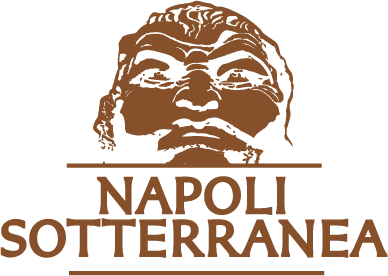In Campania, and in Naples in particular, a name is never just a label: it is a declaration of identity, a deep connection to family, faith, history and territory. This week, we want to talk about the most beloved and widespread names of the past in Naples and Campania, those that still resonate today in the alleys of the historic centre, in neighbourhood chatter and in popular traditions.
One above all? Gennaro, of course. But he is not the only one.
Gennaro: between faith, miracles and tradition
It would be impossible to talk about Neapolitan names without mentioning Gennaro.
Saint Gennaro, patron saint of the city, is a much-loved figure, whose cult is intertwined with the spirituality and daily life of the Neapolitans. Every year, the city comes to a standstill for the miracle of the liquefaction of blood, an event that combines faith and folklore and keeps the whole of Campania in suspense.
It is no coincidence that Gennaro has been one of the most popular names for Neapolitan children for decades, as a gesture of protection and devotion.
Other traditional names: a geography of the soul
In addition to Gennaro, there are other names that have marked Neapolitan history and identity:
Carmela / Carmine: derived from devotion to Our Lady of Mount Carmel, these are beloved names, especially in working-class neighbourhoods. The Festa del Carmine, with its evocative “raising of the painting” and fireworks, is still one of the most heartfelt events in Naples today.
Pasquale: a deeply rooted name, often linked to Easter but also a symbol of rebirth and hope. Among Neapolitan families, Pasquale is often the name given to the firstborn son, in honour of a grandfather or important relative.
Concetta: linked to the cult of the Immaculate Conception, the name Concetta has been one of the most popular for decades, especially among the working classes. The votive shrines dedicated to the Madonna in the alleys of the city centre often bear this name.
Giuseppe/Giuseppina: this name has always been one of the most popular in Naples and throughout Campania, symbolising a tradition rooted in popular faith. Linked to the figure of St Joseph, protector of workers and father par excellence, it evokes values of humility, dedication and family. Proudly borne by grandparents and grandchildren alike, it is a name that spans generations without losing its charm. In Neapolitan homes and alleyways, “Peppino” is more than just a name: it is a living link to the past. A journey into the heart of Neapolitan identity.
Antonio/Antonia: a timeless classic, linked to Saint Anthony of Padua, but also to the symbolic value of strength and determination. The name is widespread throughout Campania and carries with it a sense of familiarity and affection.
The historic centre: the beating heart of traditional names
The historic centre of Naples is a veritable treasure trove of history, culture and popular traditions. Here, ancient names can be found on every corner, in street names, churches, squares and, above all, in people.
The link between the name of San Gennaro and the historic centre is particularly strong: Naples Cathedral, where the saint’s relics are kept, is the focal point of many celebrations and processions.
The hidden beauty of the historic centre: Napoli Sotterranea
The historic centre of Naples, declared a World Heritage Site, is a fascinating blend of history, art and tradition, where every alleyway tells the story of centuries of change and continuity. In the narrow, lively alleys, it is common to hear children being affectionately called by traditional names, while families pass down stories and devotions linked to patron saints and important figures in the city. But among the most surprising wonders of Naples lies an even deeper world, in the true sense of the word: Napoli Sotterranea. Beneath the bustling life on the surface lies an intricate labyrinth of tunnels, cavities and ancient structures that tell the hidden history of the city. Descending into this underground universe means taking a journey through time, among evidence of the Greco-Roman era, Second World War shelters and ancient aqueducts.
The contrast between the bright light of the squares and the silent darkness of the underground offers a unique experience, revealing the deep historical and cultural stratification of Naples – a city that, above and below the surface, never ceases to fascinate and surprise.
Names as cultural heritage
In Naples, choosing a name for a child is an act laden with meaning. Often, the rule of “grandfather’s name” is followed, a tradition that strengthens family ties and has its roots in Mediterranean culture. This practice, still respected by many families today, ensures that ancient names continue to live on in new generations, keeping alive the memory of those who came before us.
Names as intangible heritage
In conclusion, the names of the past in Naples are not just a list of names: they are cultural codes, signs of belonging and expressions of love for one’s homeland. In an age when modern names are mixed with traditional ones, rediscovering these ancient names means reconnecting with one’s roots.
And if today, walking through Naples, you hear a child being called Gennarino, Pasqualino or Concettina, know that behind that name there is a piece of history, an expected miracle, a remembered grandfather, and the whole soul of a city that never forgets where it comes from.

